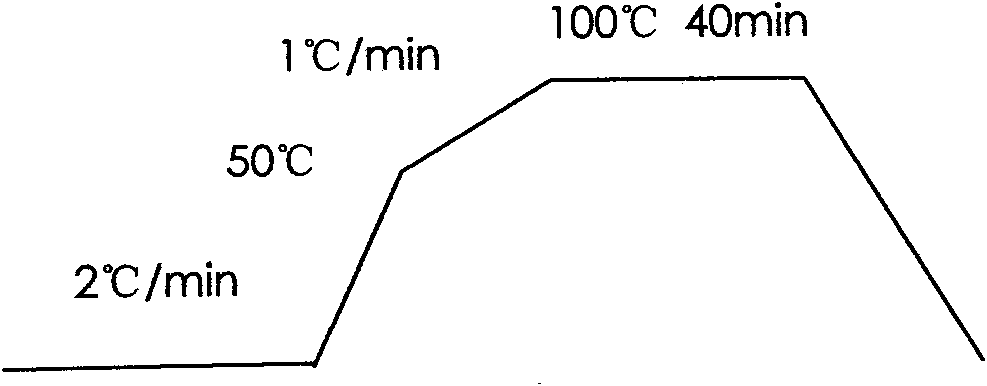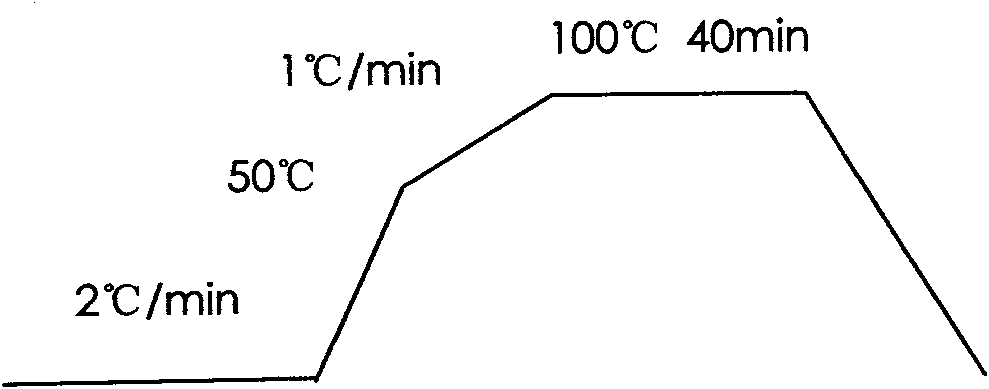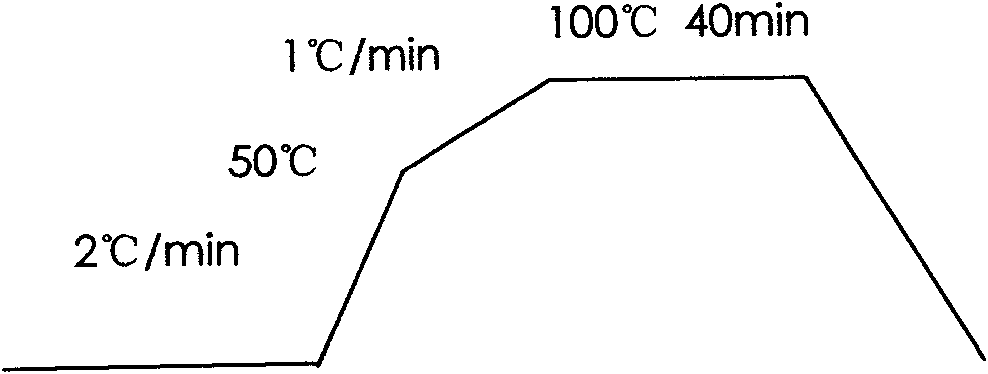Method for darkly dyeing PLA (polylactic acid) filament yarn fabrics
A filament fabric, dark color technology, applied in the field of textile printing and dyeing, can solve the problems that affect the normal use and application range of PLA products, PLA filament fabrics cannot be dyed in dark colors, PLA fibers are acid-resistant and alkali-resistant, etc., to improve dyeing performance And deep color, good dyeing effect, the effect of improving the problem of dark dyeing
- Summary
- Abstract
- Description
- Claims
- Application Information
AI Technical Summary
Problems solved by technology
Method used
Image
Examples
Embodiment 1
[0025] The PLA filament fabric was treated with low-temperature plasma in a low-temperature plasma device. The treatment conditions were: power 60W, time 60S, and the treatment atmosphere was air. The treated PLA filament fabric was dyed with Dianix (Blue) XF. Dyeing conditions: dye 1% (o.w.f), diffusing agent NNO 1g / L, liquor ratio 1:30, adjust pH value to 4-5 with acetic acid, dyeing process route as figure 1 Shown: Press figure 1 After the dyeing is performed according to the heating curve, water washing, reduction cleaning, water washing, and drying are carried out.
[0026] The PLA filament fabric dyed in Example 1 and the PLA filament fabric processed by conventional dyeing process are carried out for dye uptake and k / s value detection, and the test results show that: the dye uptake rate of the PLA filament fabric without plasma treatment is 46.7%, k / s value is 3.12, the dyeing rate of PLA filament fabric treated by plasma is 58.9%, k / s is 4.23, dyeing rate and k / s grow...
Embodiment 2
[0028] Low-temperature plasma treatment was performed on the PLA filament fabric in a low-temperature plasma device. The treatment conditions were: power 100W, time 100S, and the treatment atmosphere was air. The treated PLA filament fabric was dyed with Dianix (Blue) XF. Dyeing conditions: dye 1% (o.w.f), diffusing agent NNO 1g / L, liquor ratio 1:30, adjust pH value to 4-5 with acetic acid, dyeing process route as figure 2 Shown: Press figure 2 After the dyeing is performed according to the heating curve, water washing, reduction cleaning, water washing, and drying are carried out.
[0029] The PLA filament fabric dyed in Example 2 and the PLA filament fabric processed by conventional dyeing process are carried out for dye uptake and k / s value detection, and the test results show that: the dye uptake rate of the PLA filament fabric through plasma treatment is 64.1%, k / s is 5.23, dyeing rate and k / s growth rate are 37.26% and 67.63% respectively.
Embodiment 3
[0031] Low-temperature plasma treatment was performed on the PLA filament fabric in a low-temperature plasma device. The treatment conditions were: power 100W, time 100S, and the treatment atmosphere was air. The treated PLA filament fabric was soaked in an acrylic acid solution with a mass fraction of 30% for 60 minutes. The PLA filament fabric was then dyed with Dianix (Blue) XF. Dyeing conditions: dye 1% (o.w.f), diffusing agent NNO 1g / L, liquor ratio 1:30, adjust pH value to 4-5 with acetic acid, dyeing process route as image 3 Shown: Press image 3 After the dyeing is performed according to the heating curve, water washing, reduction cleaning, water washing, and drying are carried out.
[0032] The PLA filament fabric dyed in Example 3 and the PLA filament fabric processed by conventional dyeing process are carried out for dye uptake and k / s value detection, and the test results show that: the dye uptake rate of the PLA filament fabric through plasma treatment is 72.1%...
PUM
 Login to View More
Login to View More Abstract
Description
Claims
Application Information
 Login to View More
Login to View More - R&D
- Intellectual Property
- Life Sciences
- Materials
- Tech Scout
- Unparalleled Data Quality
- Higher Quality Content
- 60% Fewer Hallucinations
Browse by: Latest US Patents, China's latest patents, Technical Efficacy Thesaurus, Application Domain, Technology Topic, Popular Technical Reports.
© 2025 PatSnap. All rights reserved.Legal|Privacy policy|Modern Slavery Act Transparency Statement|Sitemap|About US| Contact US: help@patsnap.com



